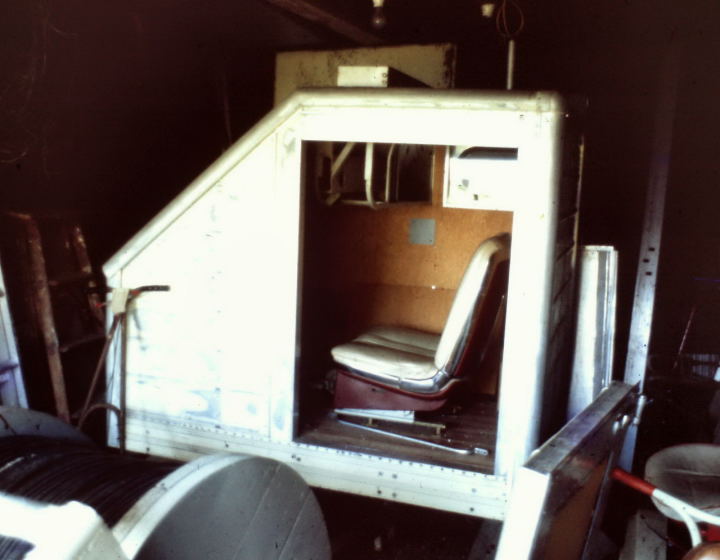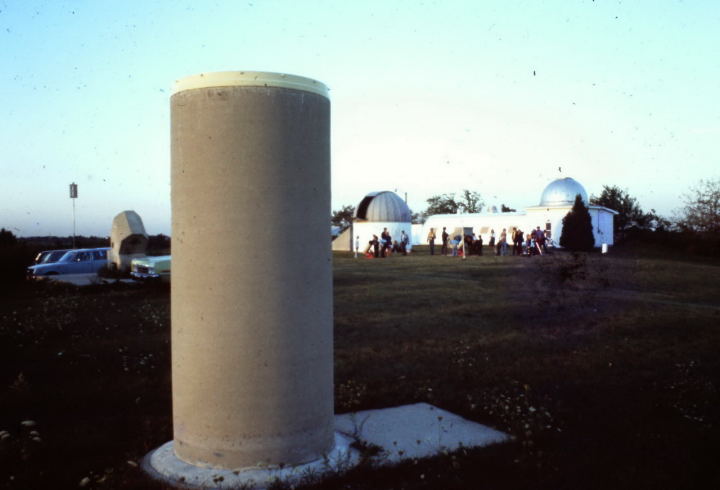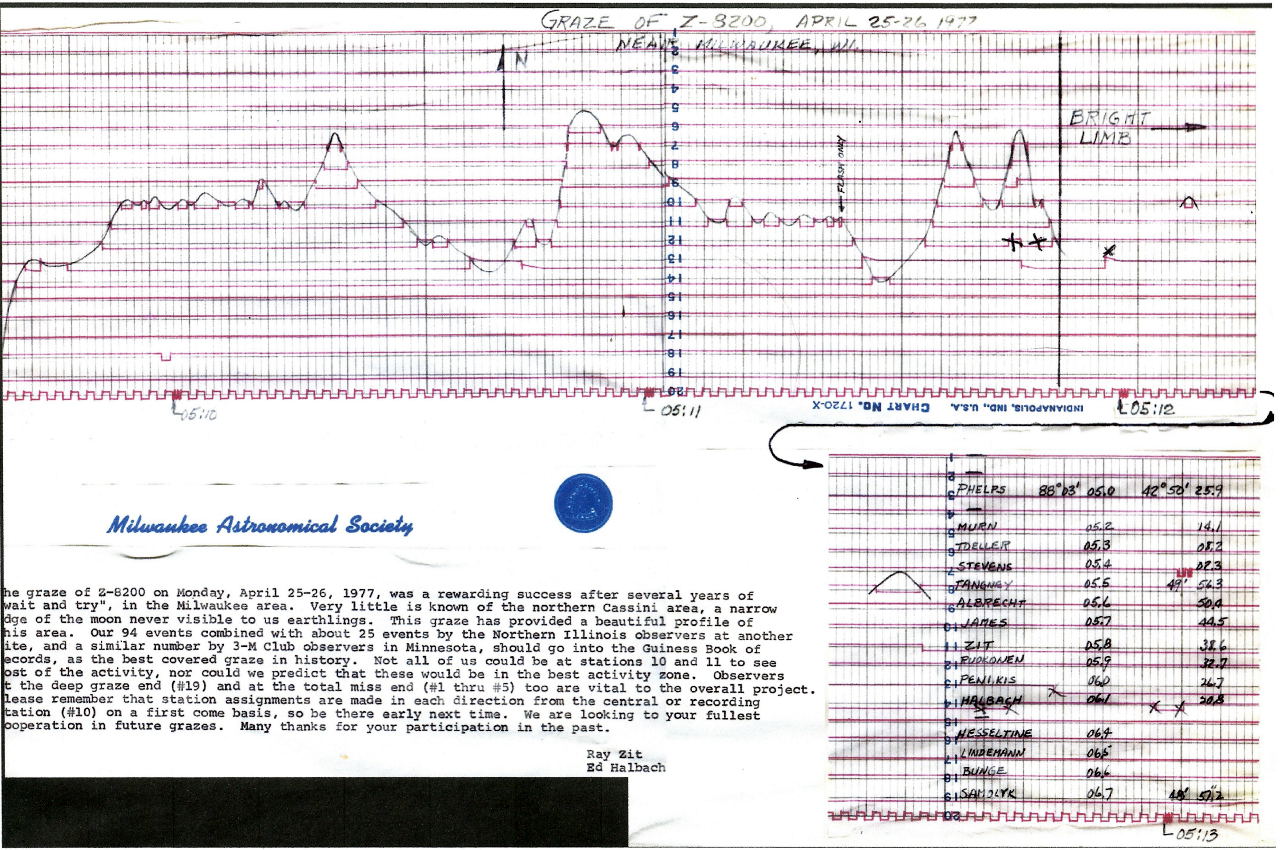Edward A. Halbach
Page 3, 1955-2011
In 1955, the society managed to secure a surplus Quonset Hut from the City of Milwaukee through the Milwaukee Public Museum.
In 1957, the dawn of the space age, Halbach got the MAS to join the Smithsonian Astrophysical Observatory "Project Moonwatch" which was a satellite tracking program. The program already existed, but was boosted by the Soviet Union's unexpected launch of Sputnik.
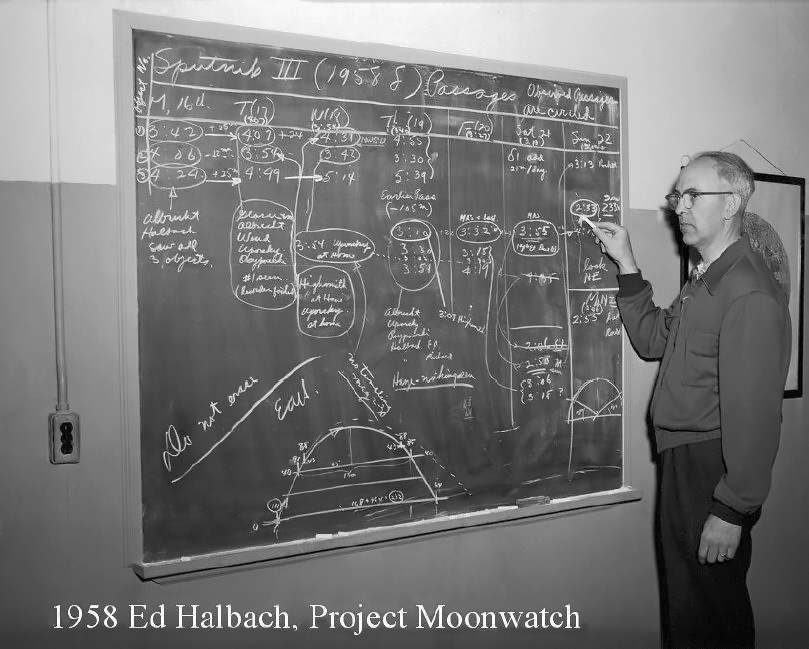
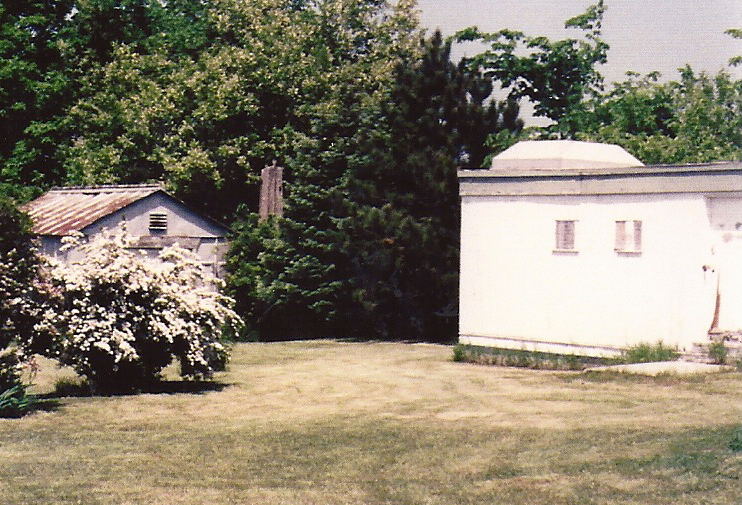 In 1957, A.O. Smith Company donated $1700 toward the construction of a rotating shuttered satellite
observation building. It is decided that the funds by used to convert the Monastery to a "Moonwatch Building" for
the satellite tracking program. By that time the office and library had already been moved
to the back room of the Quonset was now heated and functioning as the club office.
In late August, they started work on the conversion.
A new roof was put on (making it a flat roof) with a pier added so instruments could view the sky through an
opening with a hinged cover. The structure was completed by November.
In 1957, A.O. Smith Company donated $1700 toward the construction of a rotating shuttered satellite
observation building. It is decided that the funds by used to convert the Monastery to a "Moonwatch Building" for
the satellite tracking program. By that time the office and library had already been moved
to the back room of the Quonset was now heated and functioning as the club office.
In late August, they started work on the conversion.
A new roof was put on (making it a flat roof) with a pier added so instruments could view the sky through an
opening with a hinged cover. The structure was completed by November.
The picture shows the new structure that became known as the Satellite Shed. At the left in that picture is the original Tool Shed and just to the right is the lower portion of what was the radio mast constructed in 1938.
As a result of the work on Project Moonwatch, the MAS predicted and observed the reentry of Sputnik IV in 1962.
In 1964 Halbach was elected a Founder Member.
Observations of lunar occultations had been going on for a decades, but it wasn't until the mid 1960's that computers became fast enough to accurately predict lunar grazing occultations. Halbach would get the club involved by building a trailer to hold 2 miles of cable for the timings and the hardware for the switches that were placed at tenth of a mile intervals. The Esterline Angus Instrument Company donated a 20 pen recorder for the project. Soon, the MAS becomes a leader in the this new field.
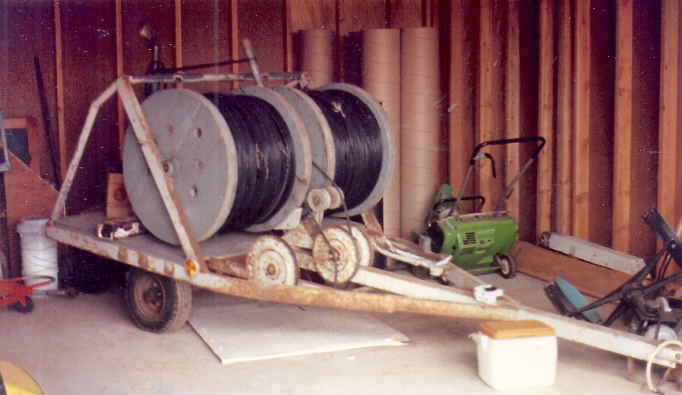
In 1969, after a disappointing graze attempt by 6 observers because of inadequate equipment, Halbach proposes the club build a number of "easily portable" 8-inch or larger reflectors for the grazes and general use, especially at the Open House nights. [From the Nov, 1969 Double Dome]
In 1970, Halbach along with a number of helpers designs and builds 10 portable photographic telescopes using 120mm 20X satellite scopes on loan to the society. Bob James constructs a mirror grinding machine to help make 12 10-inch f/5.6 mirrors for the "Portascope" telescopes for grazing occultation work. The meeting hall in the Quonset essentially becomes a factory for the portascopes over the next 3 years.
![By Milwaukeeastronomer [CC BY-SA 4.0 (https://creativecommons.org/licenses/by-sa/4.0)], from Wikimedia Commons MAS 10" f/5.6 Portascope](../images/archives/MAS_History/portascope.jpg)
Photo from: Wikimedia Commons
In 1971, Twelve MAS members observed a total eclipse in eastern Canada. For Halbach this was his eighth eclipse expedition.
In 1972, Halbach was honored by receiving the Astronomical League Award, which is presented to an amateur or professional who has made worthwhile contributions to the science of astronomy on a national or international level. By 1972, Halbach was constructing what he called the Comet Seeker. The base would be completed and the cab basically completed, but this is as far as the project will ever progress.
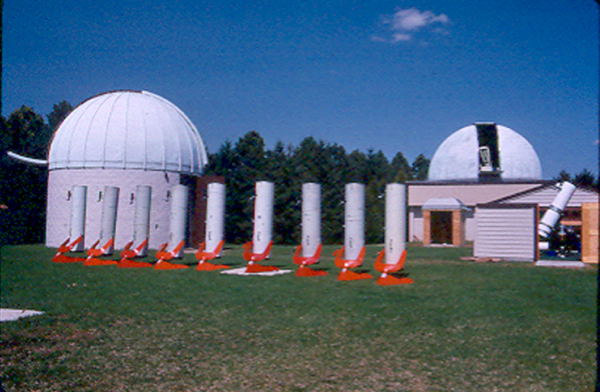
Also in that year, Halbach starts MAS on the Eclipsing Binary Program to determine the periodicity of EB stars which will become a long-term monitoring project headed by Gerry Samolyk. He will also add RR Lyrae stars to this program. Though the primary reason for the portascope construction was for the grazing occultation program and secondarily for general use and at the open houses, their greatest use came in their use in this program.
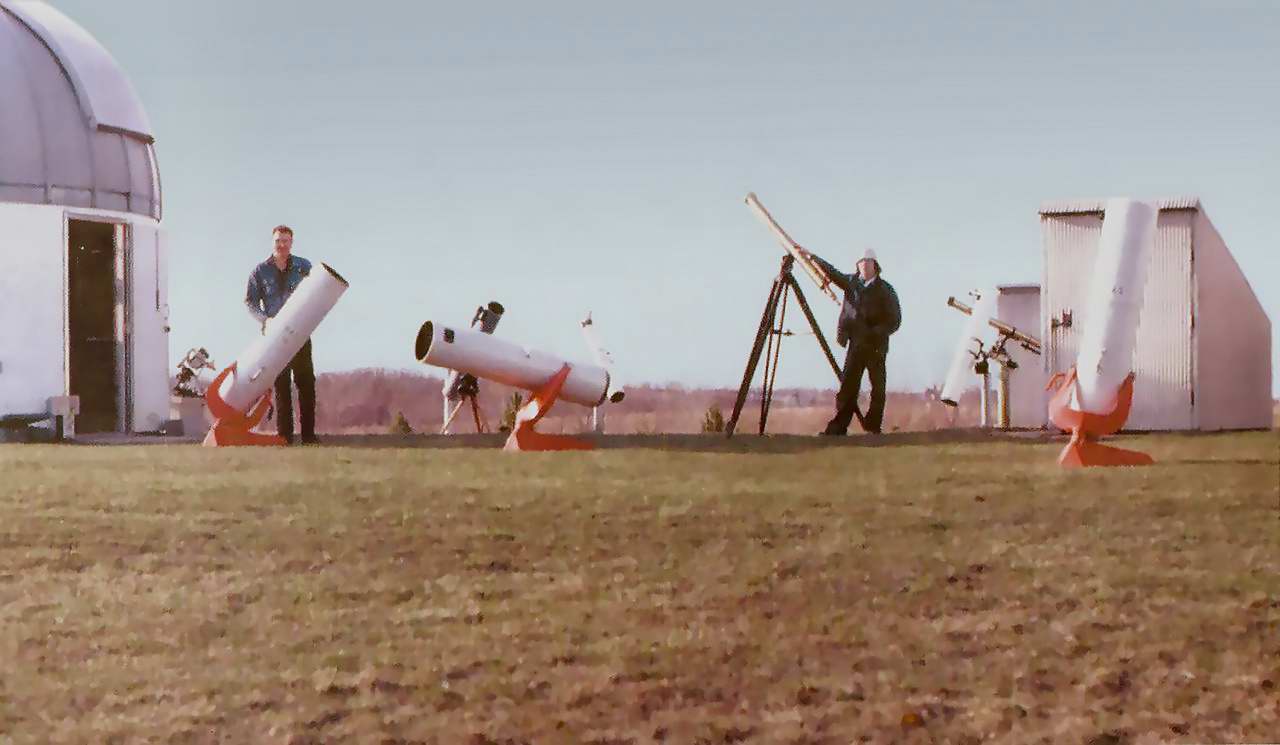
 In 1975 work was completed on refurbishment of the Buckstaff Scope (aka B-Scope). Halbach made new setting circles for that scope.
As that project completed, work began on the Armfield Observatory to finally motorize the dome. When that was completed, Halbach began work on the Armfield Scope (generally
better known as the A-Scope). The telescope mount was completely refurnished with Halbach making new setting circles. Also, a hand paddle was installed to both operate the dome rotation and to
slew the telescope in both Dec and RA.
In 1975 work was completed on refurbishment of the Buckstaff Scope (aka B-Scope). Halbach made new setting circles for that scope.
As that project completed, work began on the Armfield Observatory to finally motorize the dome. When that was completed, Halbach began work on the Armfield Scope (generally
better known as the A-Scope). The telescope mount was completely refurnished with Halbach making new setting circles. Also, a hand paddle was installed to both operate the dome rotation and to
slew the telescope in both Dec and RA.
In 1977 work on the A-Scope was complete. The Board votes to rename the A-Scope the Edward A. Halbach Telescope to both honor both his work on the scope and all that he has given the society since 1932. But 1977 brought some sadness when Halbach announces his retirement. He resigns as Observatory Director as he will be moving to Colorado the following year.
Also that year, nine observers which included Halbach obtained record graze results; 108 data points at region of limb near Cassini. See the photo below:

MAS graze observers around 1974. From left: Jim Toeller, Paul Murn, Virgil Tangney, Ken Krahn, Bill Collins, Bill Albrecht, and Ed Halbach.
Later Employment and Retirement
After his employment with Marquette University as an instructor, he took a job as a research engineer at the Perfex Corporation. Later he worked as an engineer for AC-Delco where he worked on missle guidance systems for the Titan and Apollo space programs. He then went to Allis-Chalmers where he developed electro-mechnanical devices for diesel locomotives. That company eventually merged becoming Siemens Allis.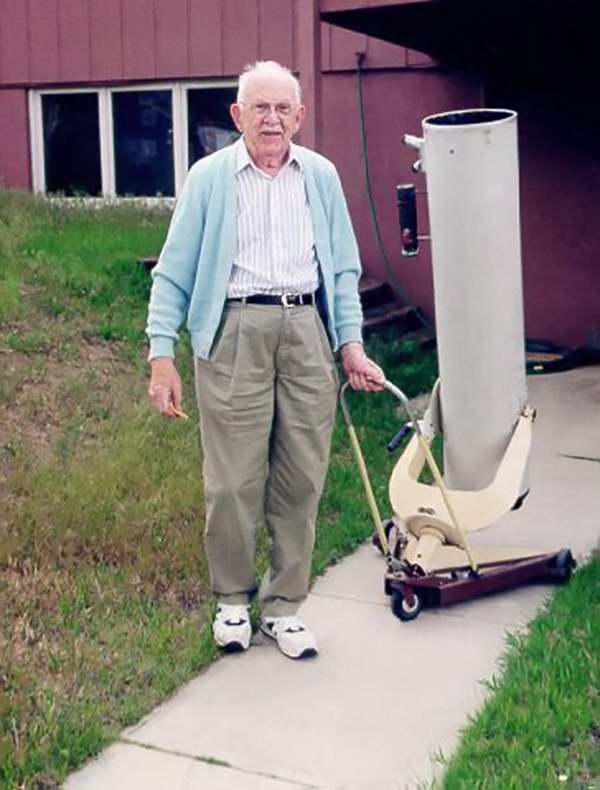 In 1978, Ed Halbach and his wife, Jane, moved to Estes Park, CO. The house that Ed had designed included a rooftop observatory
for a 16-inch Cassegrain scope on a modified Springfield mount. He would spend much of his retirement working on this project
(Halbach always needed to have a project to tinker with). While working on this scope, he used one of the MAS 10" Portascopes in his backyard to continue
his occultation and variable star observing. The original mount was modified by the addition of a clock drive and setting circles. He would haul it out
and it would be locked into precise position so it was automatically polar aligned. He also fashioned an observing cart where he stored his many
charts and recorded his observations.
In 1978, Ed Halbach and his wife, Jane, moved to Estes Park, CO. The house that Ed had designed included a rooftop observatory
for a 16-inch Cassegrain scope on a modified Springfield mount. He would spend much of his retirement working on this project
(Halbach always needed to have a project to tinker with). While working on this scope, he used one of the MAS 10" Portascopes in his backyard to continue
his occultation and variable star observing. The original mount was modified by the addition of a clock drive and setting circles. He would haul it out
and it would be locked into precise position so it was automatically polar aligned. He also fashioned an observing cart where he stored his many
charts and recorded his observations.
In 1981, the Astronomical League gave the very first Leslie C. Peltier Award to Halbach citing his variable star work.
In 1988, Halbach received the AAVSO Merit Award. In his award they cited, "... in recognition of his outstanding record of over 50,000 observations contributed during 54 years of faithful AAVSO membership, his long-standing devotion to the ideals and purposes of the Association, his generous contribution of time and effort in constructing essential office furniture at the new Headquarters in Cambridge, Massachusetts, and his valuable work in the preparation of charts."
In 1994, he received a AAVSO Observer Award for his contribution of over 50,000 visual variable star estimates. This was the inaugural year for the award and by that time he had made 73,263 observations.
In 1997, Halbach received the Amateur Achievement Award from the Astronomical Society of the Pacific which recognizes significant observational or technological contributions to astronomy or amateur astronomy by an individual not employed in the field of astronomy in a professional capacity. They cited his work on variable stars and occultations.
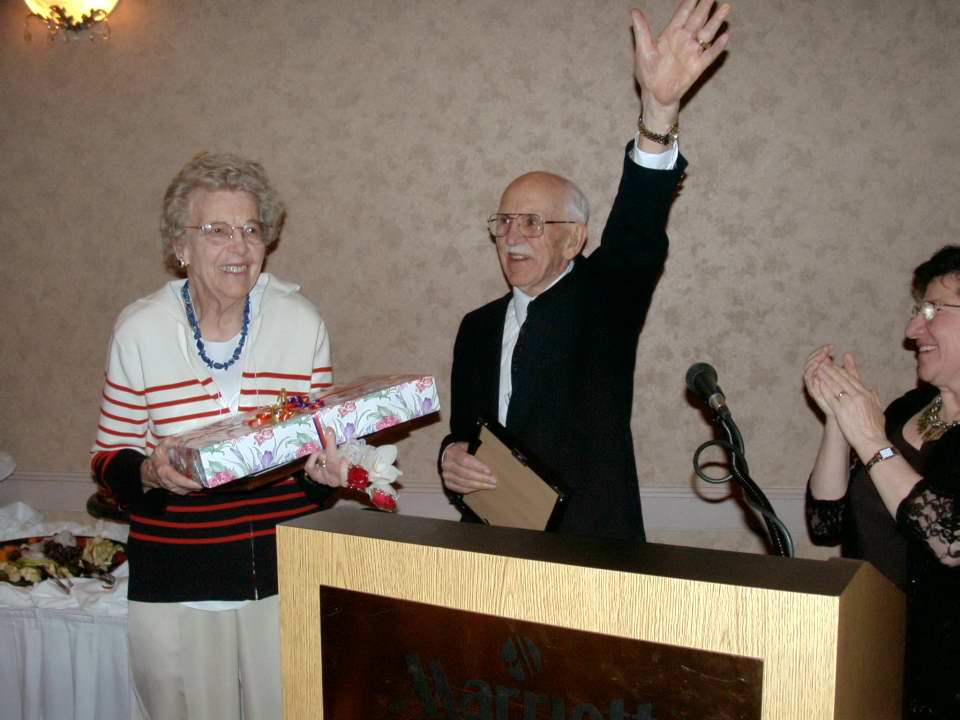 A significant
part of Ed Halbach's legacy was his role as a mentor to other observers. For example, in 1933, Ed met a high school student named
Bill Albrecht. Ed took Bill under his wing and it was the start of a close friendship
that lasted for over three-quarters of a century.
Over the decades that followed, several generations of observers as well as a few professional astronomers were mentored by Halbach.
At the 2003 spring meeting of the AAVSO, Halbach received the William Tyler Olcott Award in acknowledgment of this effort. At the same meeting,
Jane was credited for "putting up with Ed" during more than 60 years of marriage. You can read the complete
citation for Halbach's award here.
A significant
part of Ed Halbach's legacy was his role as a mentor to other observers. For example, in 1933, Ed met a high school student named
Bill Albrecht. Ed took Bill under his wing and it was the start of a close friendship
that lasted for over three-quarters of a century.
Over the decades that followed, several generations of observers as well as a few professional astronomers were mentored by Halbach.
At the 2003 spring meeting of the AAVSO, Halbach received the William Tyler Olcott Award in acknowledgment of this effort. At the same meeting,
Jane was credited for "putting up with Ed" during more than 60 years of marriage. You can read the complete
citation for Halbach's award here.
Halbach's final official honor was a AAVSO Observer Award for his contribution of over 100,000 visual variable star estimates. It was presented to him on the occasion of his 100th birthday, April 4, 2009.
In addition to his observing, Ed and Jane enjoyed extensive world travel during their retirement. The Halbach's also did volunteer work with Habitat for Humanity designing and supervising construction projects and Ed served on their local board of directors. This work continued until he was well into his 90's. They were honored for their efforts when Estes Park named Halbach Lane after them.
Ed and Jane were married for 65 years. Jane died on September 16, 2007, at age 90. After that, Halbach moved to Minnesota where a couple of his children lived. Halbach passed away on March 20, 2010, just short of his 102nd birthday.
There are many facets to Halbach's legacy. His engineering talent and creativity was at the genius level. He could find an economical solution to almost any problem. His innovations kept the MAS observatory thriving thru the depression and a world war. He was a leader.
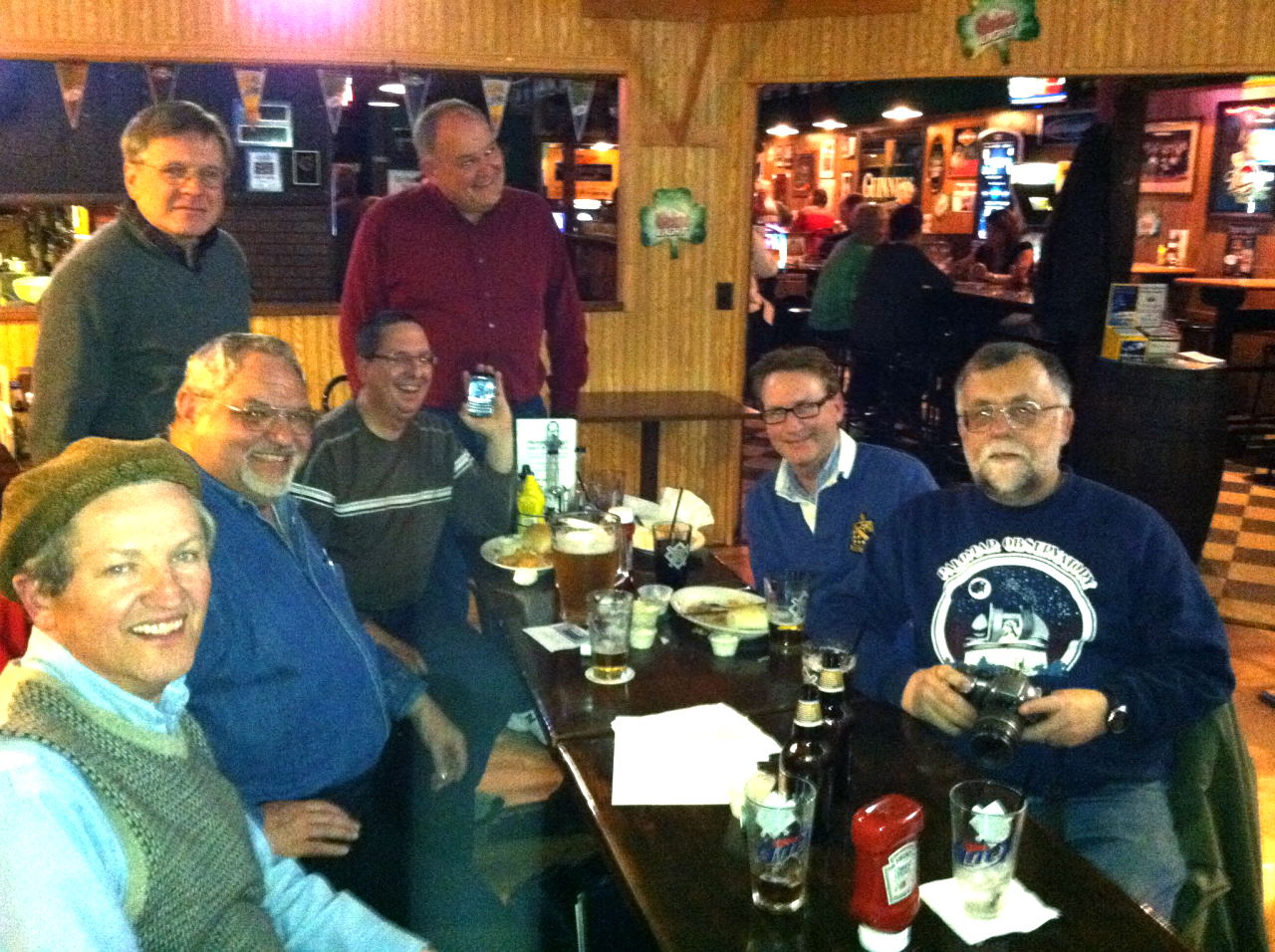 A remembrance
for Halbach was held on April 1, 2011, by some of the older members of the MAS whose lives were directly touched by him. In the photograph:
Tom Schmidtkunz, Gerry Samolyk, Brian Ganiere, Paul Borchardt, Neil Simmons, Jim Fanson, and Henry Gerner. Paul is holding up his phone with
John Asztalos on the line. John Pfannerstill is not seen as he took the photo.
A remembrance
for Halbach was held on April 1, 2011, by some of the older members of the MAS whose lives were directly touched by him. In the photograph:
Tom Schmidtkunz, Gerry Samolyk, Brian Ganiere, Paul Borchardt, Neil Simmons, Jim Fanson, and Henry Gerner. Paul is holding up his phone with
John Asztalos on the line. John Pfannerstill is not seen as he took the photo.
Ed Halbach was honored posthumously when in 2014 the IAU named an asteroid after him: (357546) Edwardhalbach = 2004 RA339.
Read Gerry Samolyk's tribute to Halbach that he wrote shortly after his passing.
Read Gene Hanson's account of his visit to Halbach in Colorado.

